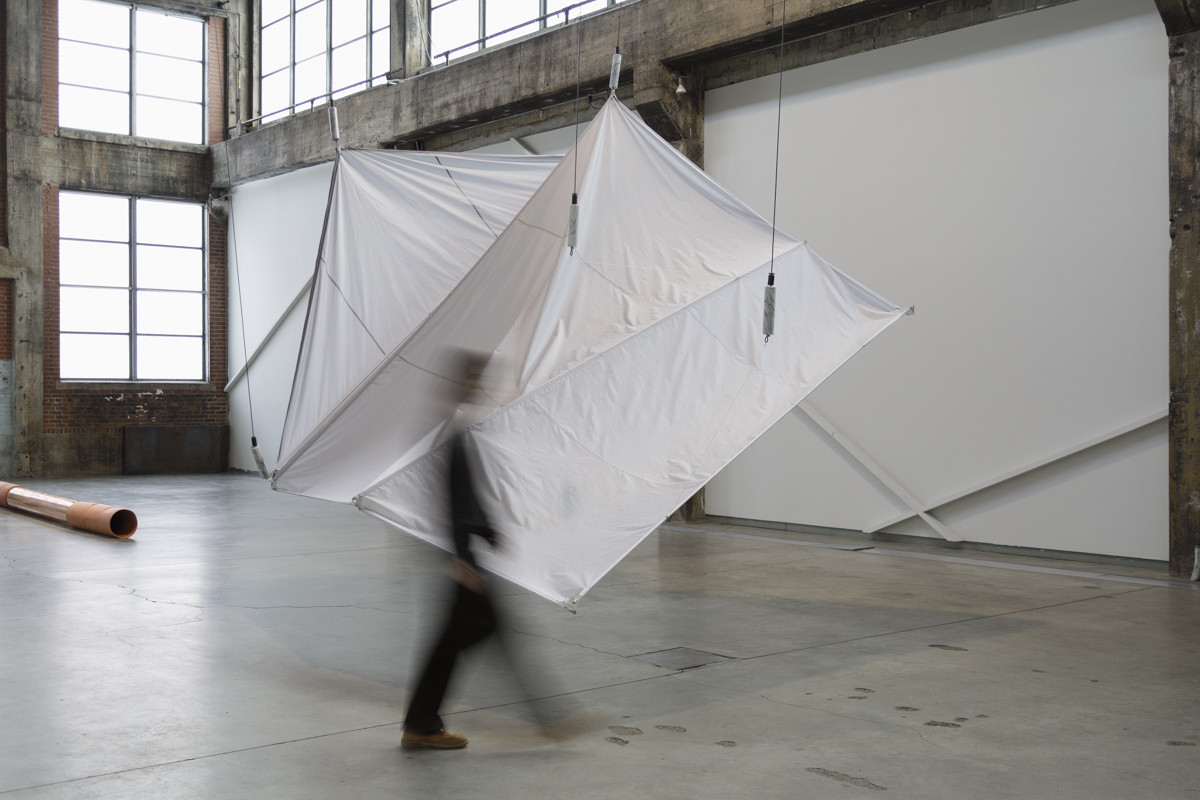
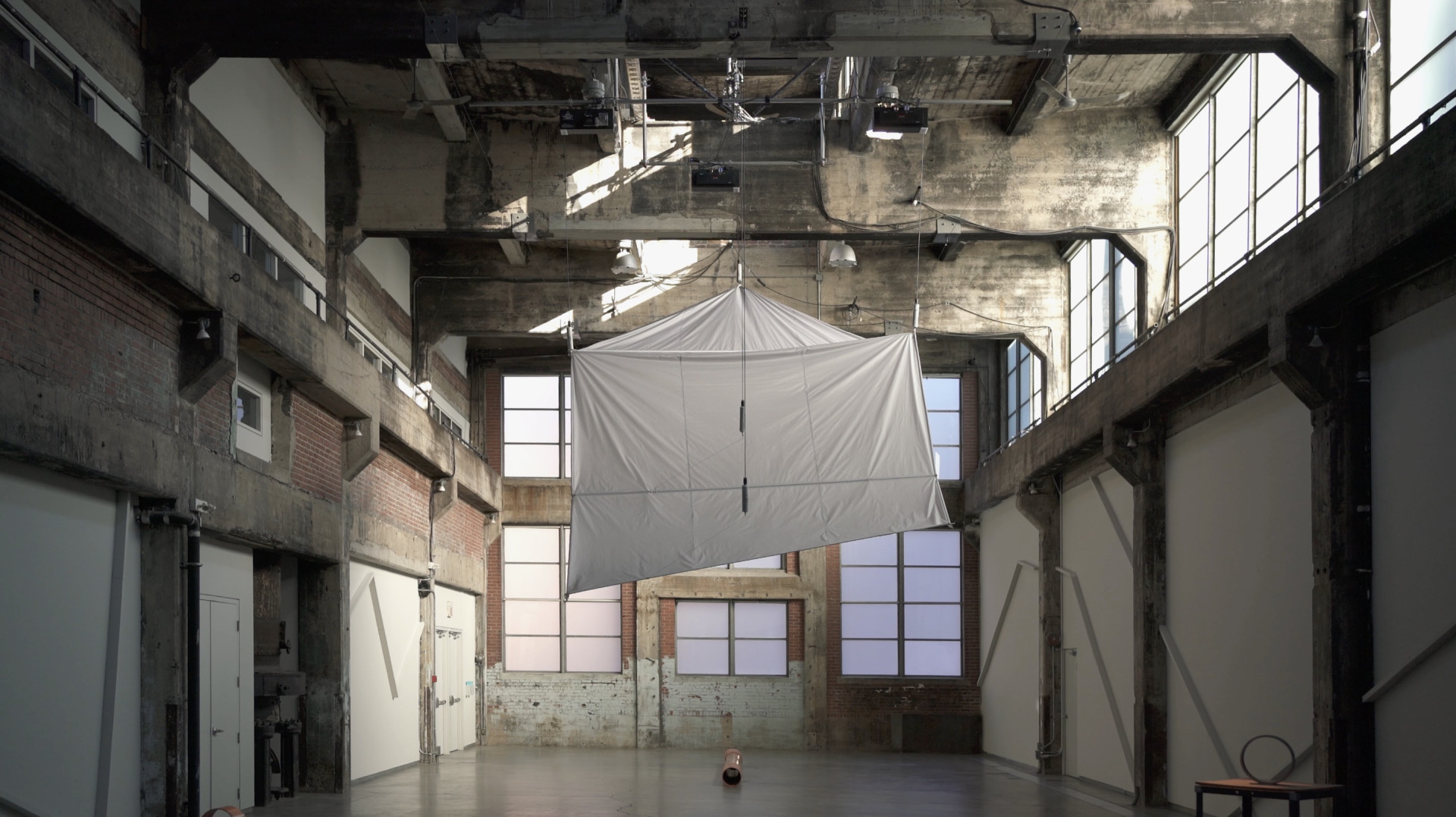

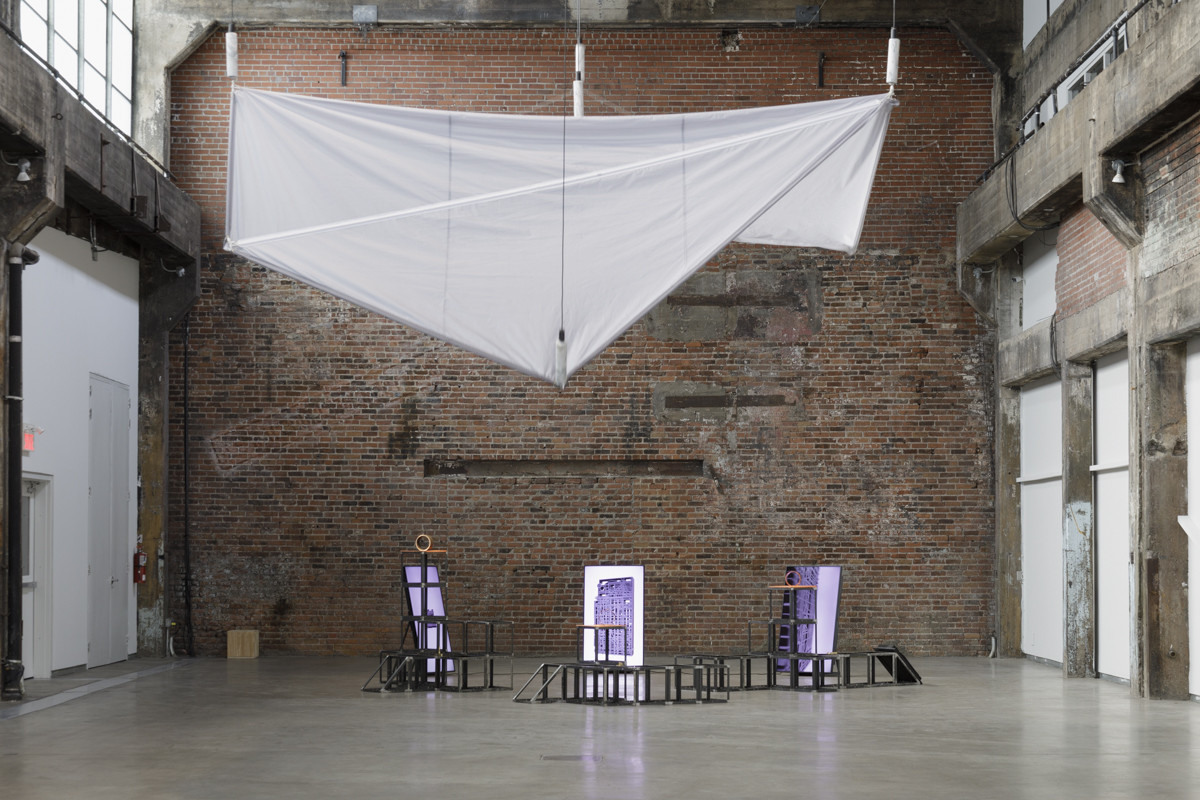
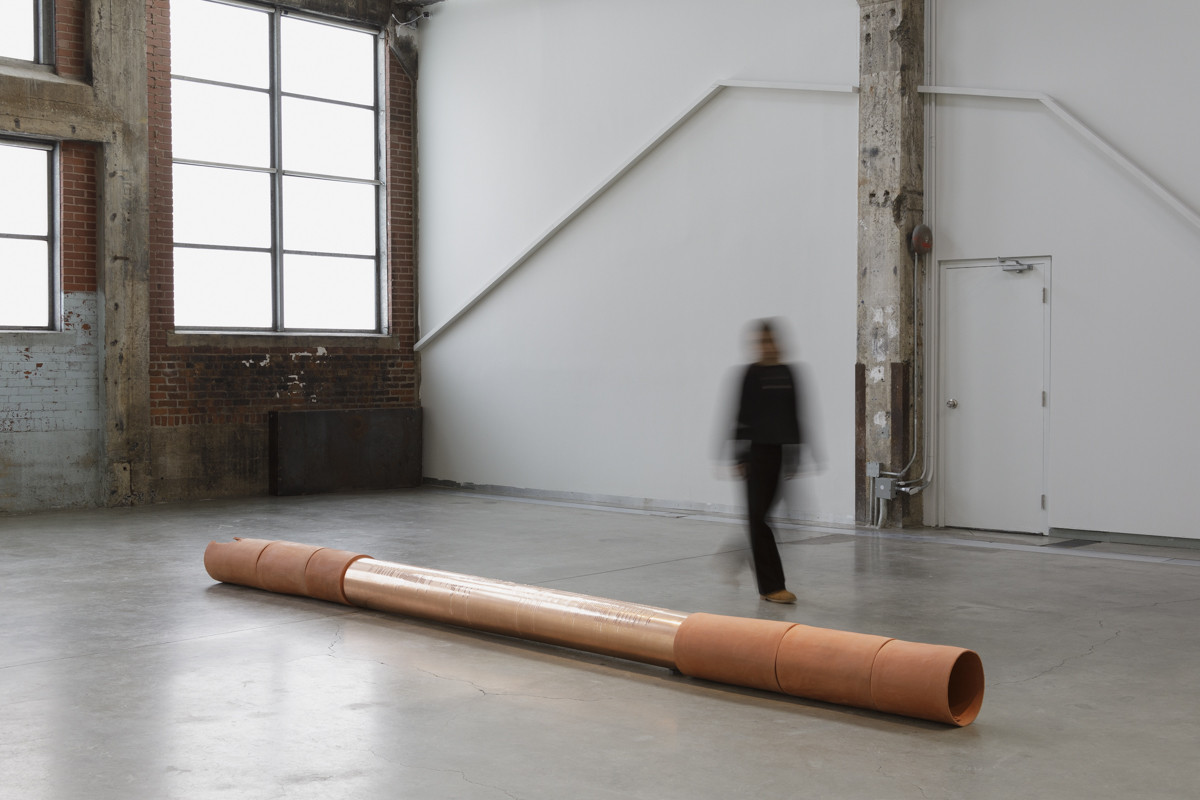
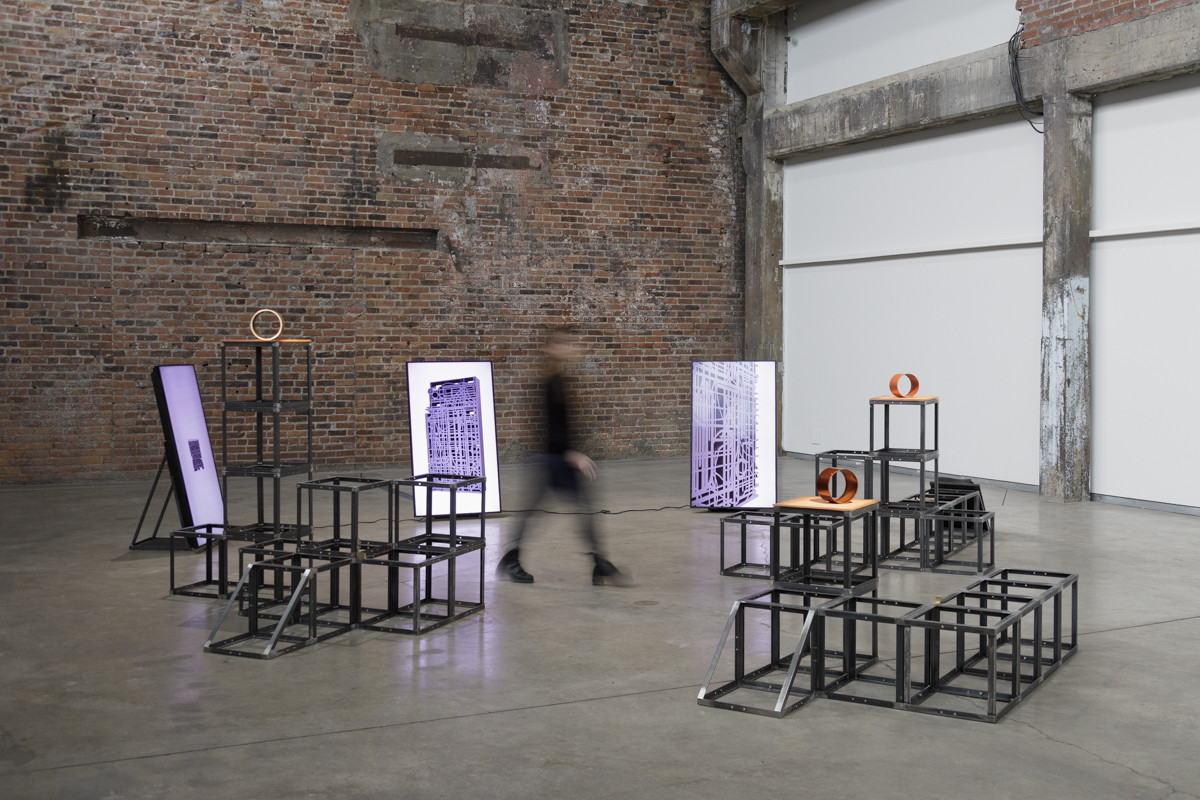
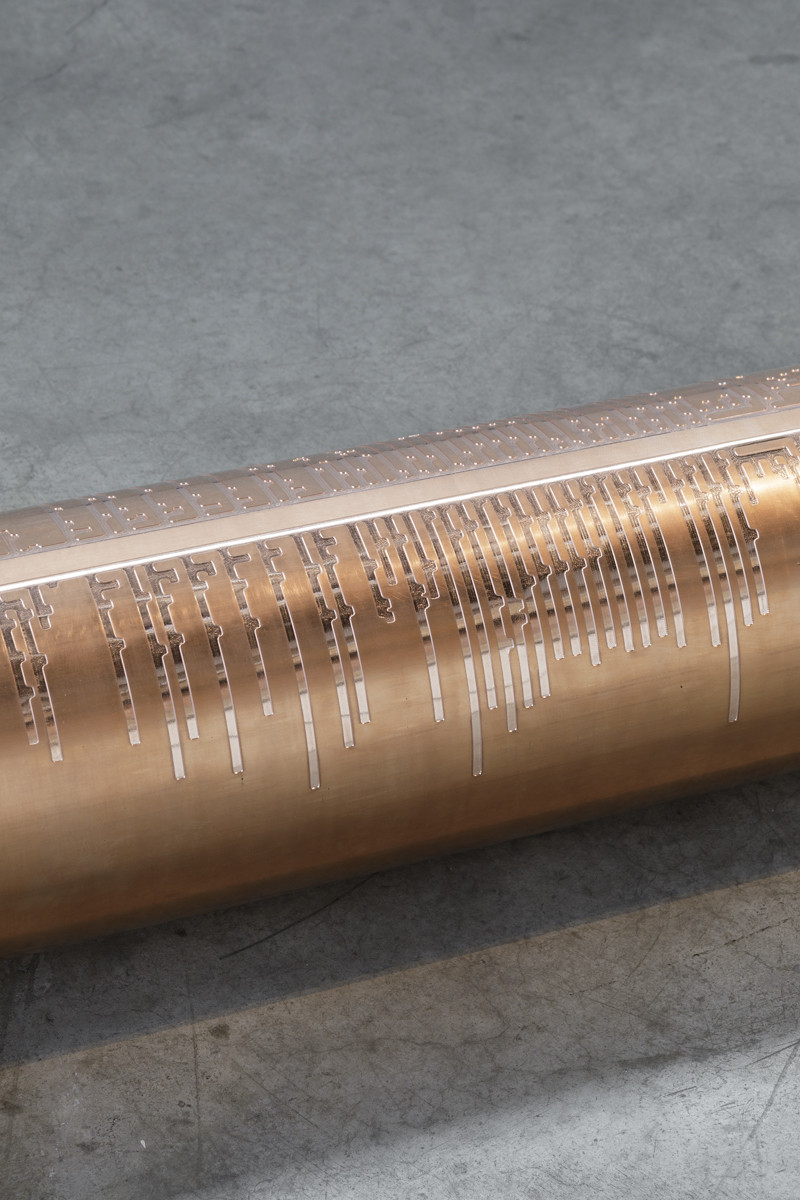

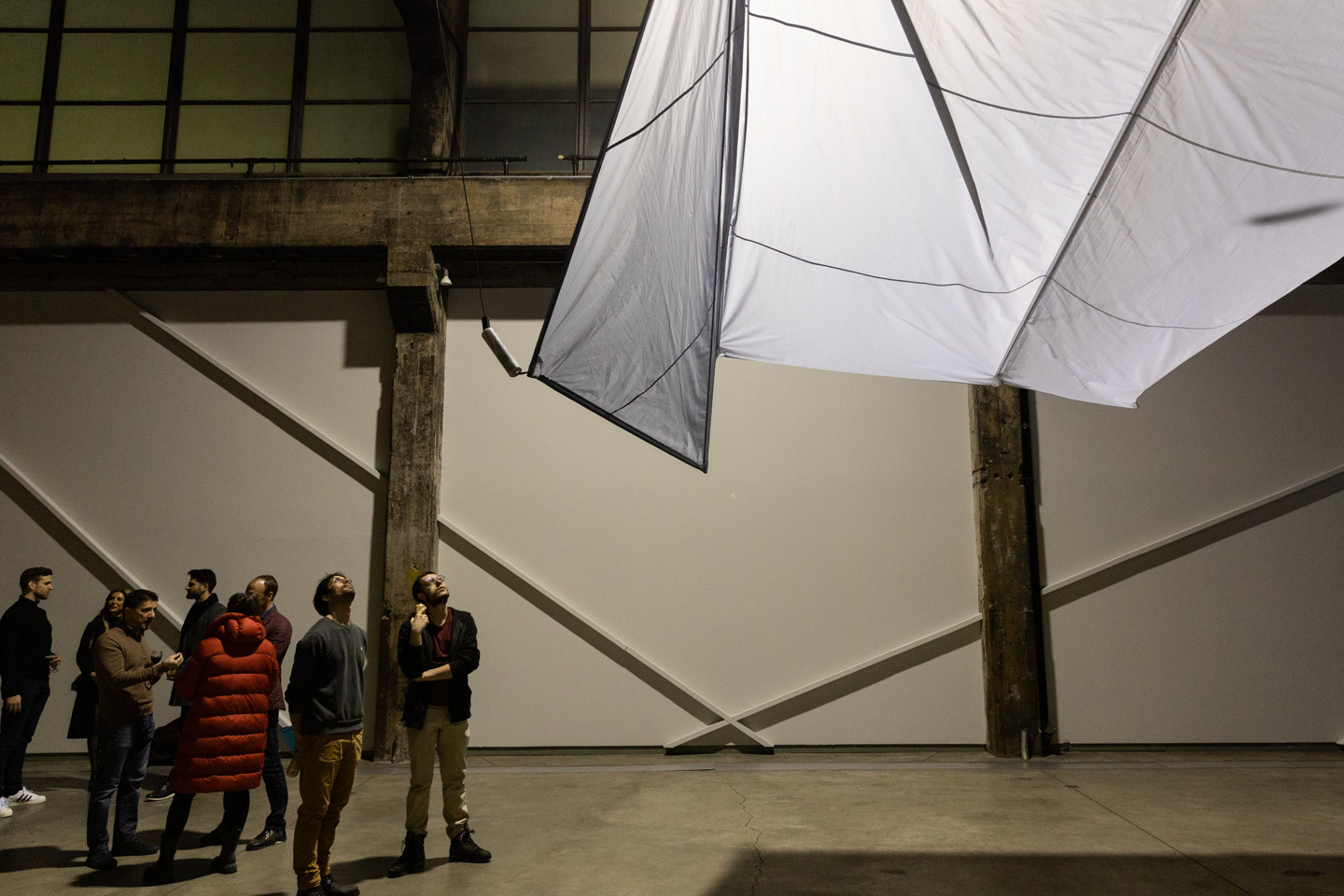
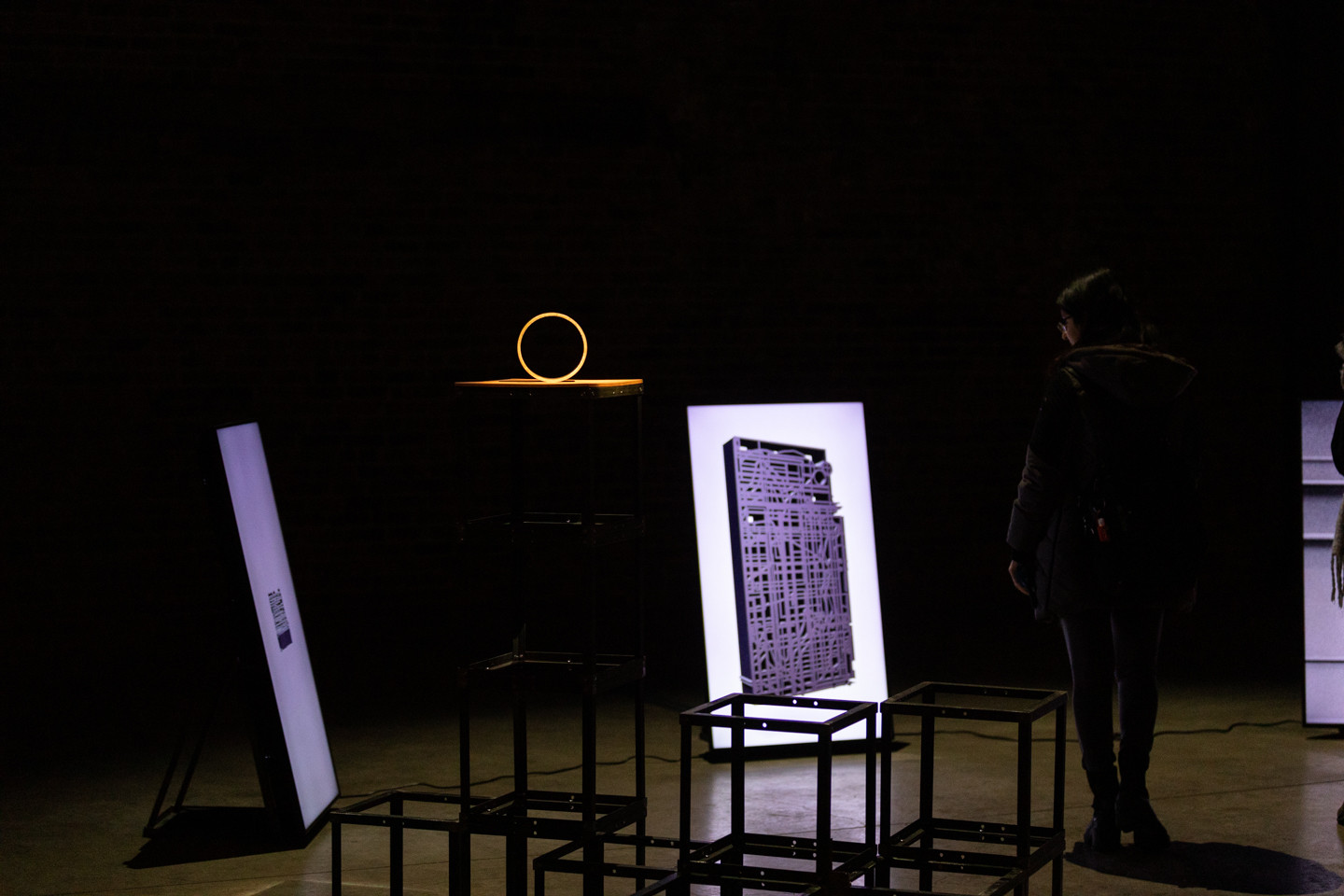
Twelve years ago, Amélie Laurence Fortin went on a sea kayaking expedition, crossing 3000 kilometres of icy water from Alaska to Vancouver. Her observations and the traces left by this extreme adventure have become a source of reflection and a driving force for her creative work ever since: How might we translate the connection that humans have with the fabulous forces of the world? How do we react to the vastness and face things greater than ourselves?
Yarn of a Short Night marks the end of a cycle of work that examines the way in which we position ourselves in relation to orders of magnitude. By focusing on three major axes that are central to human development, namely the notions of exploration, territory, and time, Amélie Laurence Fortin presents a triad of site-specific works in Fonderie Darling’s Main Hall, interweaving her narratives with the imposing architecture of the site. Developed by the artist in a sequence in which the space first dictated the choice of materials and then the materials led to the construction of stories, the exhibition constantly moves between different temporalities and diverging directions. In French, the word “récits” is intentionally plural; it reflects a non-linear concept of multiple realities and the idea that History is experienced simultaneously. The choice of the term “yarn” in English is a play on words: it refers both to the idea of a tale and to the notion of a common thread linking all the stories together.
Windsower/Girouette, a giant kinetic sculpture activated by an electronic and robotic system, is the first iteration of Amélie Laurence Fortin’s research into the speculative potential of objects. A polyester sheet, used particularly in the manufacturing of hot air balloons, hangs from the ceiling and makes a series of slow movements, creating a flow of energy. Expansion and retraction of forms, rise and decent, transition between the horizontal and the vertical: this work-creature reflects the perceptible power inhabiting this century-old building with its industrial past. To deal with the challenges of the monumental empty volume, the artist came up with a solution: she divided the space into three areas following the sides of a triangle. The second phase of her experiments resulted in Axis Mundi, a work whose meaningful title refers to the mythological and religious belief that there is a “centre of the world,” a connecting point between earth and sky. The massive object created by Amélie Laurence Fortin directs our gaze to the floor, however, inverting the vertical axis of the world into a horizontality that can be extended to a philosophical principle. The motifs etched into the copper evoke either the familiar ones of a computer circuit or the undecipherable ones of an unknown language, in a conversation in which human and machine intersect.
In an imaginary based on a comparative study of foundational stories, 19th-century romantic poetry, and the feminist writing and science fiction of the 1990s1 Yarn of a Short Night offers a point of transition to the infinite possibilities of imagining a future beyond the unique story. Amélie Laurence Fortin creates a sensitive and immersive experience of the immeasurable, of history and transition by relying on broad literary references that espouse a more complex concept of the heroic tale, one no longer exclusively stereotyped as masculine or feminine. Located at the back of the Main Hall, the installation monomyth combines found and manufactured objects. Using various schematized and encoded forms, she creates a quasi-encyclopaedic amalgam that evokes the recurrence of signs and their metamorphoses throughout history. Objects that look like artifacts are displayed in an open, modular structure; the objects seem to belong to something between what has already happened and what may yet occur. In contrast to the idea of a linear history governed by a universal structure, the assemblage as a whole gives itself the freedom to visit humanity through all the objects and stories associated with it.
Conceptualizing an exhibition entails a months-long process of reflection and is a major exercise of cohesion and synthesis. Partly imagined in the early hours of morning, at a time that can also be described as a waking dream, Yarn of a Short Night offers an immense play of perspective between a distant past and future. The three works were produced through an interdisciplinary creative process moving between visual arts and technology and requiring the support of experts. By relying on specialists in fields such as naval architecture, hot air balloon manufacturing, engineering, and design, Amélie Laurence Fortin was able to maximally explore various techniques and materials. Chosen specifically for their historical use or their potential for technological innovation, faience, copper, polyester, neoprene, steel, aluminium, brass, marble, and styrofoam are central to an exercise in translation and communication. Ambitious and full of ramifications, the exhibition is an ultimate attempt to understand the space and transpose certain lofty ideas into objects.
Milly-Alexandra Dery
Translated by Oana Avasilichioaei
INTRODUCTORY VIDEO
[1] The artist is referring specifically to the concept of the monomyth developed in Joseph Campbell’s The Hero with a Thousand Faces (1949), as well as to Maureen Murdock’s The Heroine’s Journey (1990), Valerie Estelle Frankel’s From Girl to Goddess: The Heroine’s Journey Through Myth and Legend (2010), Kim Hudson’s The Virgin’s Promise: Writing Stories of Feminine Creative, Spiritual and Sexual Awakening (2009), and T. S. Elliot’s poem The Wasteland (1922).
The creation of this work was made possible with the financial support of the Canada Council for the Arts.
![]()
ACKNOWLEDGEMENTS
Paweł Kamiński, Jean-François Lahos, Andréanne Yevrah Jones, Ludovic Boney, Max Loiselle, Marie-Ève Levasseur, Karolina Szymura, Petra Hájková, Jacques Fortin, Justine Rainville, Gaël Simon, Alexandre Vézina, Carl-Dave Lagotte, Martyna Wyrzykowska, Félix Tremblay, Stefan St-Laurent, Bernard Gervais, Vicky Sabourin, Katia Gosselin, Sarah-Jeanne Riberdy, Yanik Potvin, Pierre-Louis Fortin, Katie Zazenski, Piotr Wasylczyk, Johann Baron Lanteigne, Vincent Hinse.
Amélie Laurence Fortin
Amélie Laurence Fortin lives and works between Quebec City (Canada) and Warsaw (Poland). Her work has been presented in various solo and group exhibitions, residencies, art fairs, festivals, and is part of private and public collections in Quebec and Europe.
